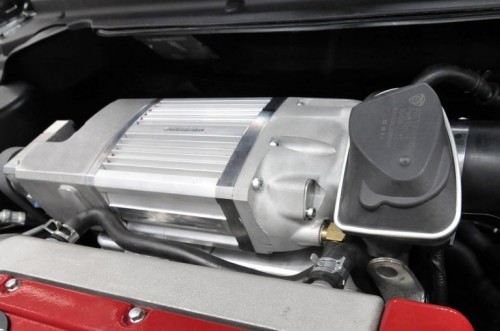
UPDATE: Apparently the Aussies have got it wrong – it is actually Proreka who are buying the superchargers for the Proton Satria Neo.
Something very interesting in the Australian news today – Automotive Technology Group (ATG) shared gained nearly 3% after it announced that it had received an AU$600,000 order for 500 units of superchargers to be supplied to Proreka.
Doing some simple maths would price each supercharger at about AU$1,200 or RM3,880 at current exchange rates, almost half the price of one would typically have to pay for a Rotrex C30, like yours truly’s. The first deliveries would begin in October this year and delivery targets are about 50 units a week. ATG goes on to say that these superchargers will be manufactured to suit the Proton Satria Neo.
It looks like the supercharged Proton Satria R3 may be going into production after all! This is indeed some very exciting news, and finally that solid Neo chassis will be receiving the powerful lump that it deserves! The prototype supercharged Neo R3 featured recently made 180 horses and 200Nm. The ATG Sprintex supercharger is if a helical twin screw design, and ATG calls it the world’s most advanced supercharger design. A twin screw positive displacement supercharger has very little lag.
ATG and local company Proreka have also signed an agreement to study the production of the Sprintex supercharger in Malaysia.
[zenphotopress number=999 album=2140]
AD: Drive the Proton model of your dreams. Submit your details and Proton PJ will get in touch with you.
Looking to sell your car? Sell it with Carro.










AI-generated Summary ✨
Comments generally express enthusiasm and support for Proton's supercharged Satria Neo R3, highlighting the engine's potential for high performance and affordability. Enthusiasts are excited about its power boost, especially the estimated 180hp with a supercharger costing around RM4K, and anticipate its competitive edge against other sporty cars like the Golf GTi and Civic Type-R. Some raise technical questions about the suitability of the existing gearbox, gear ratios, and the need for upgrades like LSD or additional gears for optimal performance. Concerns about the car's price, production limits (only 500 units), and the feasibility of retrofitting superchargers into existing models are also discussed. Overall, the comments reflect a positive outlook and eagerness for the vehicle’s release, with some technical curiosity and expectations for quality enhancements.